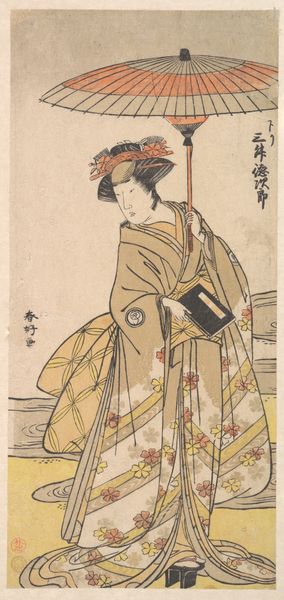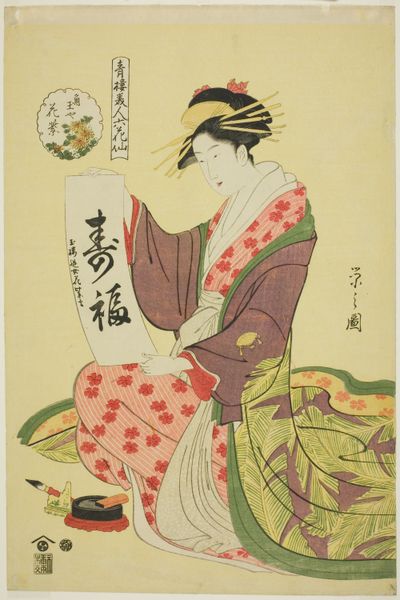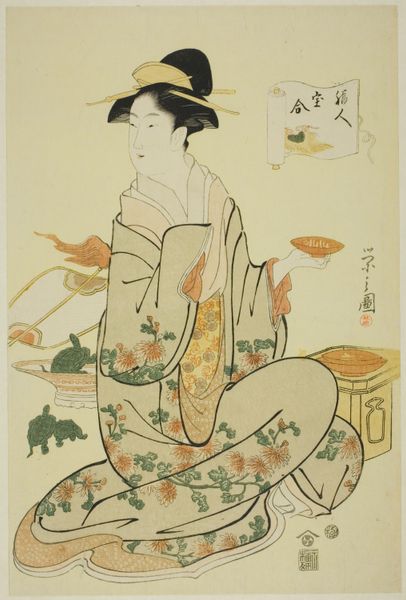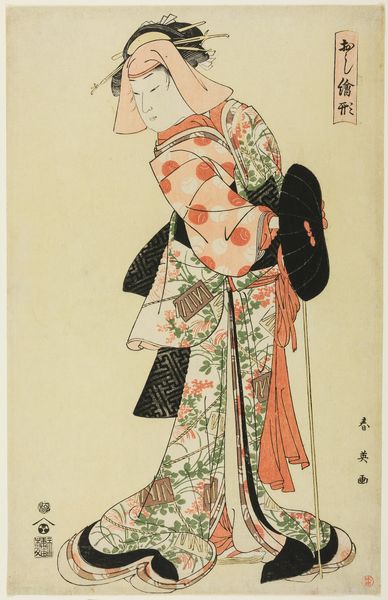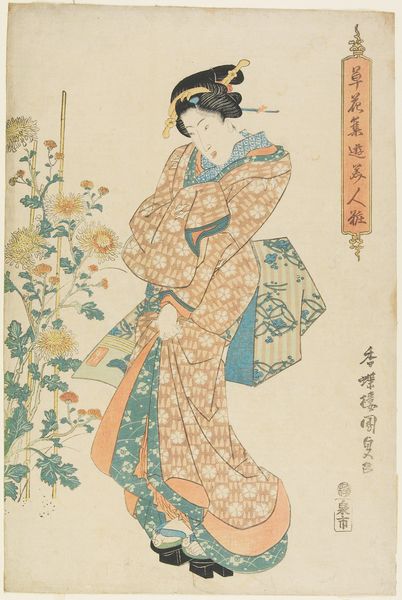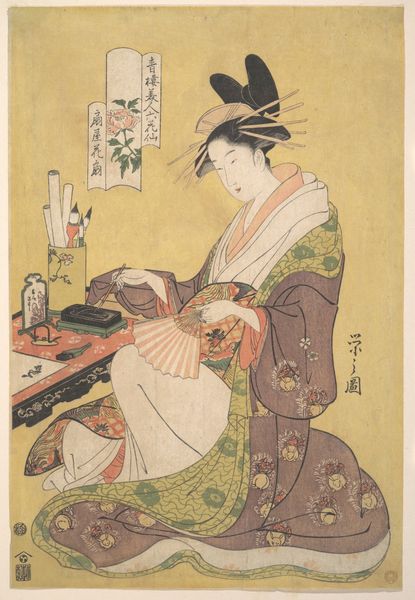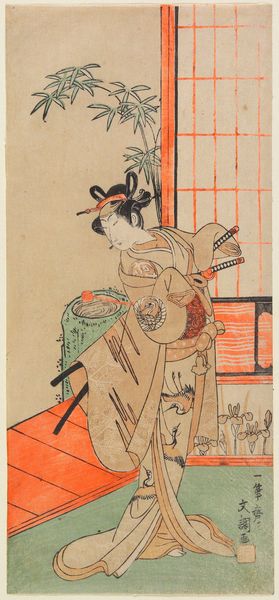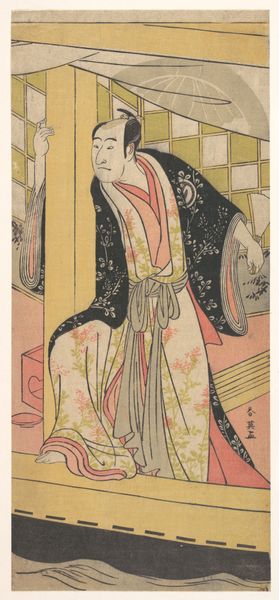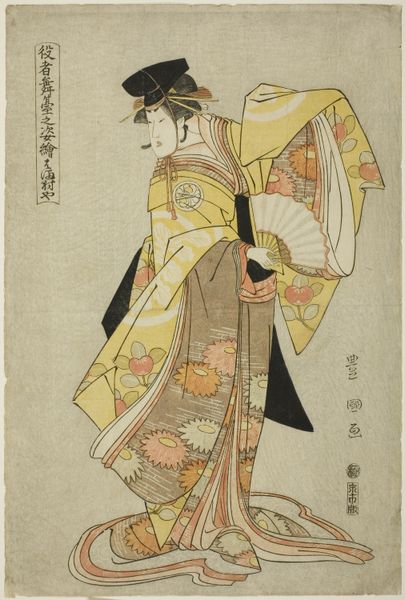
Hotei, from the series "Comparison of the Treasures of the Gods of Good Fortune (Fukujin takara awase)" c. 1795
0:00
0:00
print, woodblock-print
#
portrait
# print
#
asian-art
#
ukiyo-e
#
figuration
#
woodblock-print
#
genre-painting
Dimensions: 38.5 × 25.7 cm (15 1/8 × 10 3/16 in.)
Copyright: Public Domain
Curator: Chōbunsai Eishi, a prominent artist of the late 18th century, created this serene woodblock print titled "Hotei, from the series 'Comparison of the Treasures of the Gods of Good Fortune.'" What captures your eye about it? Editor: Immediately, the tranquility of the scene strikes me. There’s a softness to the colors, the posture of the figure. It feels like a moment of quiet contemplation, a stark contrast perhaps to the bustling city life of Edo. Curator: The choice to depict Hotei, typically a male figure associated with abundance and contentment, as a graceful woman is fascinating. Do you find that change particularly significant? Editor: Absolutely. This re-gendering challenges conventional representations of fortune and success in ukiyo-e art. It begs the question of who is granted access to prosperity and happiness within that society. Perhaps Eishi is subtly questioning the male-dominated narratives of his time. Curator: Notice also the objects surrounding the figure: the scroll, the table laden with treasures. What symbols do these items hold for you? Editor: Well, the scroll presents a symbol of divine blessings with its accompanying image of Daikoku's rat. These objects represent abundance, linking her presence to tangible manifestations of wealth. Also, it highlights how Hotei brings the power and influence associated with wealth in a patriarchal setting to a figure who usually doesn't carry such power. Curator: Precisely, the treasures echo the series’ exploration of the Fukujin—the gods of good fortune. Eishi uses recognizable motifs but subverts them to create new meaning. This tension, do you agree it heightens the visual experience? Editor: Definitely. It prompts a more thoughtful consideration of these symbols, rather than accepting them at face value. This is more than just a pretty image; it's an invitation to question assumptions. The gentle pastel palette enhances this further by invoking feelings of domesticity to make its implicit socio-political themes all the more subversive. Curator: So, the choice to soften both form and meaning… a fascinating act of empowerment via redirection! It reflects how artists of this period creatively commented on the existing social norms. Editor: Exactly! The power of subtle disruption—it is something worth considering!
Comments
No comments
Be the first to comment and join the conversation on the ultimate creative platform.
